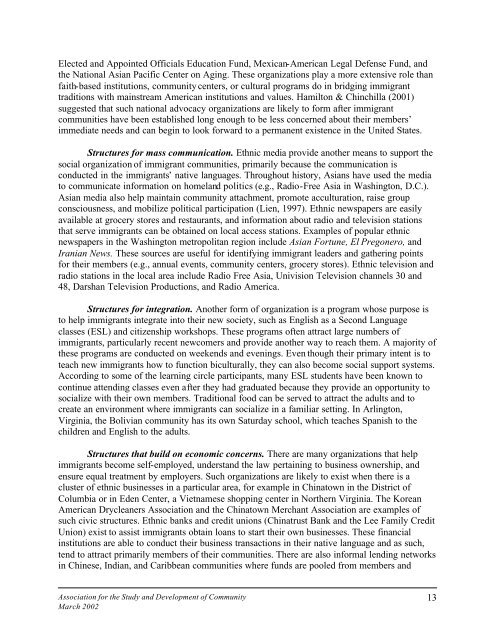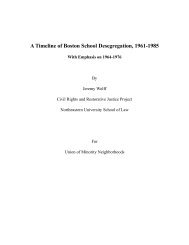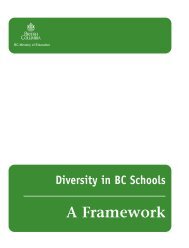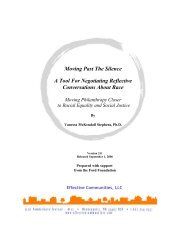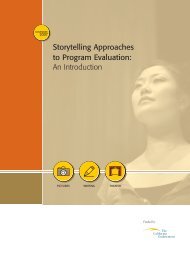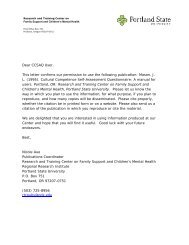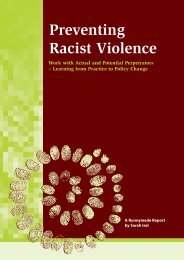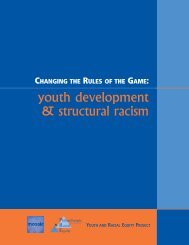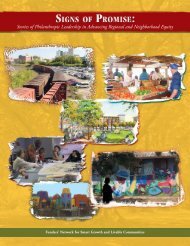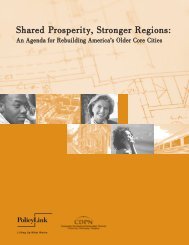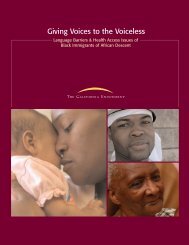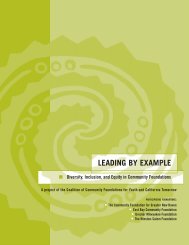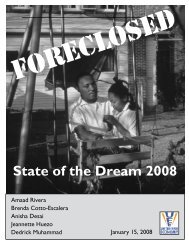lessons learned about civic participation among immigrants
lessons learned about civic participation among immigrants
lessons learned about civic participation among immigrants
You also want an ePaper? Increase the reach of your titles
YUMPU automatically turns print PDFs into web optimized ePapers that Google loves.
Elected and Appointed Officials Education Fund, Mexican-American Legal Defense Fund, andthe National Asian Pacific Center on Aging. These organizations play a more extensive role thanfaith-based institutions, community centers, or cultural programs do in bridging immigranttraditions with mainstream American institutions and values. Hamilton & Chinchilla (2001)suggested that such national advocacy organizations are likely to form after immigrantcommunities have been established long enough to be less concerned <strong>about</strong> their members’immediate needs and can begin to look forward to a permanent existence in the United States.Structures for mass communication. Ethnic media provide another means to support thesocial organization of immigrant communities, primarily because the communication isconducted in the <strong>immigrants</strong>’ native languages. Throughout history, Asians have used the mediato communicate information on homeland politics (e.g., Radio-Free Asia in Washington, D.C.).Asian media also help maintain community attachment, promote acculturation, raise groupconsciousness, and mobilize political <strong>participation</strong> (Lien, 1997). Ethnic newspapers are easilyavailable at grocery stores and restaurants, and information <strong>about</strong> radio and television stationsthat serve <strong>immigrants</strong> can be obtained on local access stations. Examples of popular ethnicnewspapers in the Washington metropolitan region include Asian Fortune, El Pregonero, andIranian News. These sources are useful for identifying immigrant leaders and gathering pointsfor their members (e.g., annual events, community centers, grocery stores). Ethnic television andradio stations in the local area include Radio Free Asia, Univision Television channels 30 and48, Darshan Television Productions, and Radio America.Structures for integration. Another form of organization is a program whose purpose isto help <strong>immigrants</strong> integrate into their new society, such as English as a Second Languageclasses (ESL) and citizenship workshops. These programs often attract large numbers of<strong>immigrants</strong>, particularly recent newcomers and provide another way to reach them. A majority ofthese programs are conducted on weekends and evenings. Even though their primary intent is toteach new <strong>immigrants</strong> how to function biculturally, they can also become social support systems.According to some of the learning circle participants, many ESL students have been known tocontinue attending classes even after they had graduated because they provide an opportunity tosocialize with their own members. Traditional food can be served to attract the adults and tocreate an environment where <strong>immigrants</strong> can socialize in a familiar setting. In Arlington,Virginia, the Bolivian community has its own Saturday school, which teaches Spanish to thechildren and English to the adults.Structures that build on economic concerns. There are many organizations that help<strong>immigrants</strong> become self-employed, understand the law pertaining to business ownership, andensure equal treatment by employers. Such organizations are likely to exist when there is acluster of ethnic businesses in a particular area, for example in Chinatown in the District ofColumbia or in Eden Center, a Vietnamese shopping center in Northern Virginia. The KoreanAmerican Drycleaners Association and the Chinatown Merchant Association are examples ofsuch <strong>civic</strong> structures. Ethnic banks and credit unions (Chinatrust Bank and the Lee Family CreditUnion) exist to assist <strong>immigrants</strong> obtain loans to start their own businesses. These financialinstitutions are able to conduct their business transactions in their native language and as such,tend to attract primarily members of their communities. There are also informal lending networksin Chinese, Indian, and Caribbean communities where funds are pooled from members andAssociation for the Study and Development of CommunityMarch 200213


